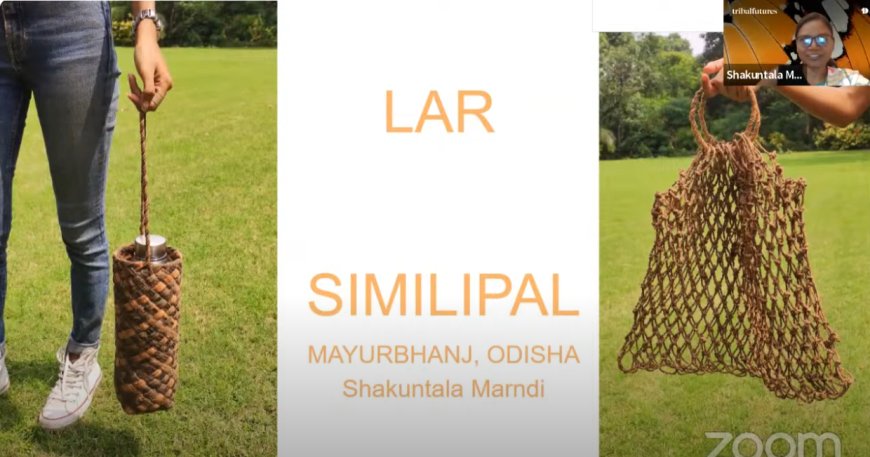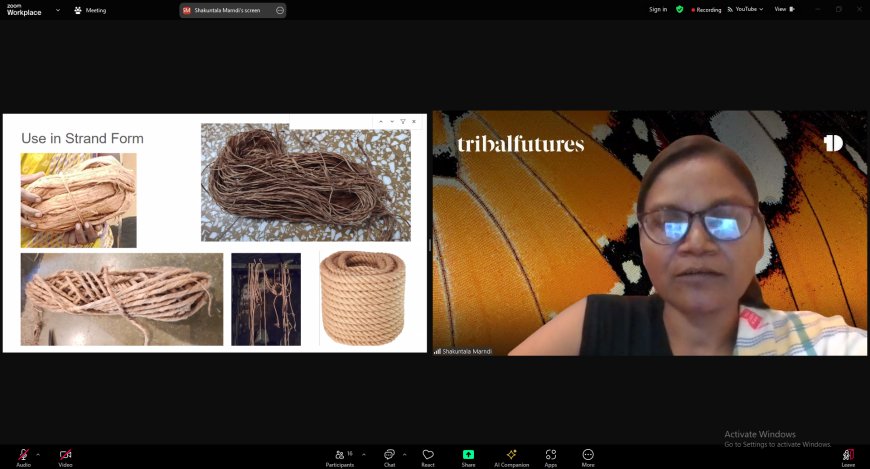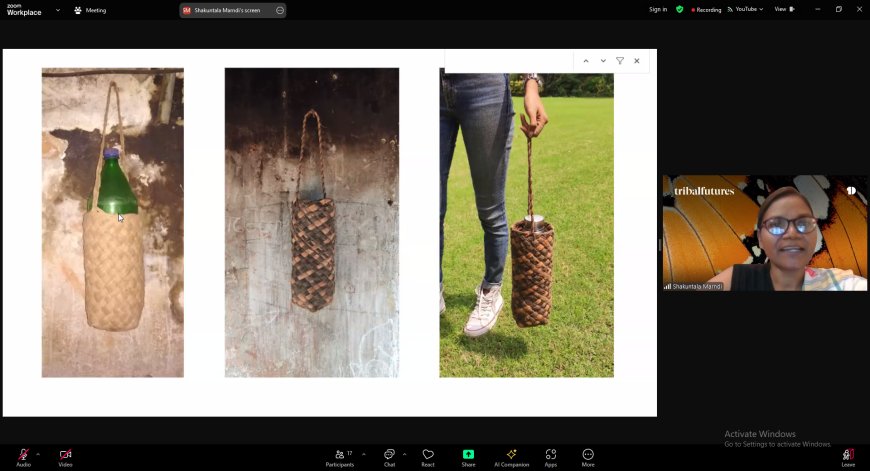Odisha Textile Designer Showcases Sustainable Crafts Inspired by Simlipal Forest at 8th day of Tribal Futures Fest.
On the eighth day of Tribal Futures, Shakuntala Marandi from the Santal Tribal Community presented on craft creation by the Santhal and Birhor communities in Simlipal forest using natural fibers. She highlighted the use of the Lar tree's bark for tool-making and discussed her design interventions that transformed these crafts into premium products, gaining recognition from professional textile designers. In her 30-minute talk, Shakuntala shared the techniques involved and her experiences working with artisans in her village and Ahmedabad.

Shakuntala Marandi, a textile designer from Odisha, participated as a guest speaker on the 8th day of the Tribal Future Fest. The session was moderated by Margret Zinyu from Nagaland.
The month-long Tribal Futures online fest is bringing together designers and creative professionals from tribal communities across India to discuss the impact of their work on their communities. This is the first-of-its-kind event in India where designers and creative professionals are discussing their work and creative imagination in relation to the cultural, social, and economic development of tribal communities.
On the eighth day of Tribal Futures, Shakuntala Marandi from Santal Tribal Community gave a presentation on the creation of crafts by the Santhal and Birhor tribal communities in the Simlipal forest area using natural fibers found there. She spoke about the Lar tree, whose bark is used by the community to create their own tools. Shakuntala explained how she intervened in this handicraft through design and made some improvements, transforming it into a better, premium product that was well-received by professional textile designers. In her 30-minute presentation, Shakuntala detailed the methods used in this art and shared her experience of working with her artisans in her village and Ahmedabad.

In Picture : Shakuntala Marandi explaining materials during her presentation.
After the presentation, the audience had the opportunity to ask questions. In response to a question about the GI tag for Santhal traditional dress, Marandi said that she had collaborated with the Odisha government in this direction. She provided the Odisha government with a book on her research on Santhal traditional attire, published by NID Ahmedabad. Work is still ongoing in this regard. Participants also asked questions about designs in Santhal traditional attire. During this hour-long discussion, people learned a lot about traditional textiles. Margaret and Shakuntala also had an informative discussion on the contemporary challenges and development of handicrafts.

Product Evolution at different stage.
At the end of the session, 15 members of the Tribal Design Forum meetup from New Delhi joined directly. The meetup was organized by Malati Majhi and Abhay Majhi. They showed live the hoarding for the Tribal Futures campaign located near the National Archives of India bus stop in Bharti Nagar, which was quite interesting.
Through this online fest, the Tribal Design Forum is celebrating World Indigenous Day as a month-long series of creative discussions rather than a one-day event, with the aim of bringing the creative talented youth of the tribal community to the world. The Tribal Design Forum has been working in this regard for the past three years and has shared its platform with 185 presenters from India and 36 countries around the world. Out of these 185 presenters, 31 have been selected for the Tribal Futures Fest. More information about this fest is available at www.tribaldesignforum.com.







